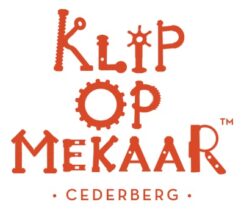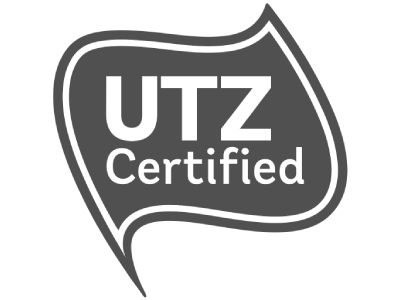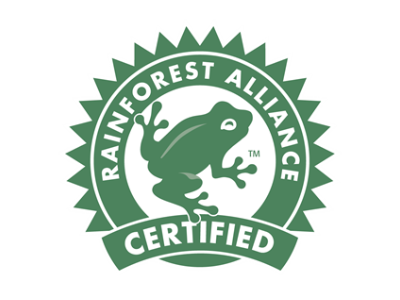- richard@klipopmekaar.co.za
- Certified organic rooibos
- Direct from the farm
The History of Ethical Certification of Rooibos
The history of the ethical certification of rooibos products is a long journey that involves measures taken by producers in the industry to do the right thing, for the environment and for those involved in the cultivation, harvesting and processing of this humble yet health-giving plant.
Rooibos only grows in the Cape Floral Kingdom, which is the smallest but by far most plant species-rich plant kingdom of the six in the world. It is also listed as a Conservation International biodiversity hotspot.
While Rooibos is partly attractive because of its ‘natural’, ‘indigenous’ status as a delicious yet healthy herb, the growth of the rooibos farming industry has in some areas caused damage to the very same environment that its reputation was built on.
As the rooibos industry’s size has grown, in response to demand from both the South African and international markets, so the number and size of rooibos farms has expanded over time. In the late 1990s, this scenario grew to become a cause for concern in terms of the impact on the biodiversity of the rooibos-growing areas of the Western and Northern Cape Provinces.
On 14 August 2006, Domitilla Raimondo, lead editor of the Red List of South African Plants (Raimondo et al, 2009), then in draft, stated that the number of threatened plant species grew significantly from 1993 to 2006 as a direct result of Rooibos tea farm expansion.
In light of this and in order to provide responsible guidelines for the protection of the environment, the National Environmental Management Act (NEMA) was promulgated in South Africa in 1998, but effective regulations to manage and control development were slower in the making. Environmental Impact Assessment Regulations to assess impacts and control authorisations for developments triggering Listed Activities only commenced effectively in 2006, but enforcement by authorities was also lagging and implementation was slow.
In effect, the growing of international markets for Rooibos in the post-apartheid period was ahead of stricter land-use regulation, leading to concern from environmentalists about the loss of important biodiversity.
At Klipopmekaar, we have always sought to follow the NEMA guidelines when any expansion of our farming footprint has taken place – and this includes advocating for responsible farming by following the guidelines to ensure as little interruption or disturbance to indigenous biodiversity, including to any Red Data species found within our footprint.
To ensure we achieve compliance, all development on our farm in the Cederberg Mountains has proceeded with the necessary approvals – a process that we’ve willingly followed, as our aims are firmly aligned with those of ethical certification bodies worldwide. We believe that what’s good for the environment and our people is good for business.
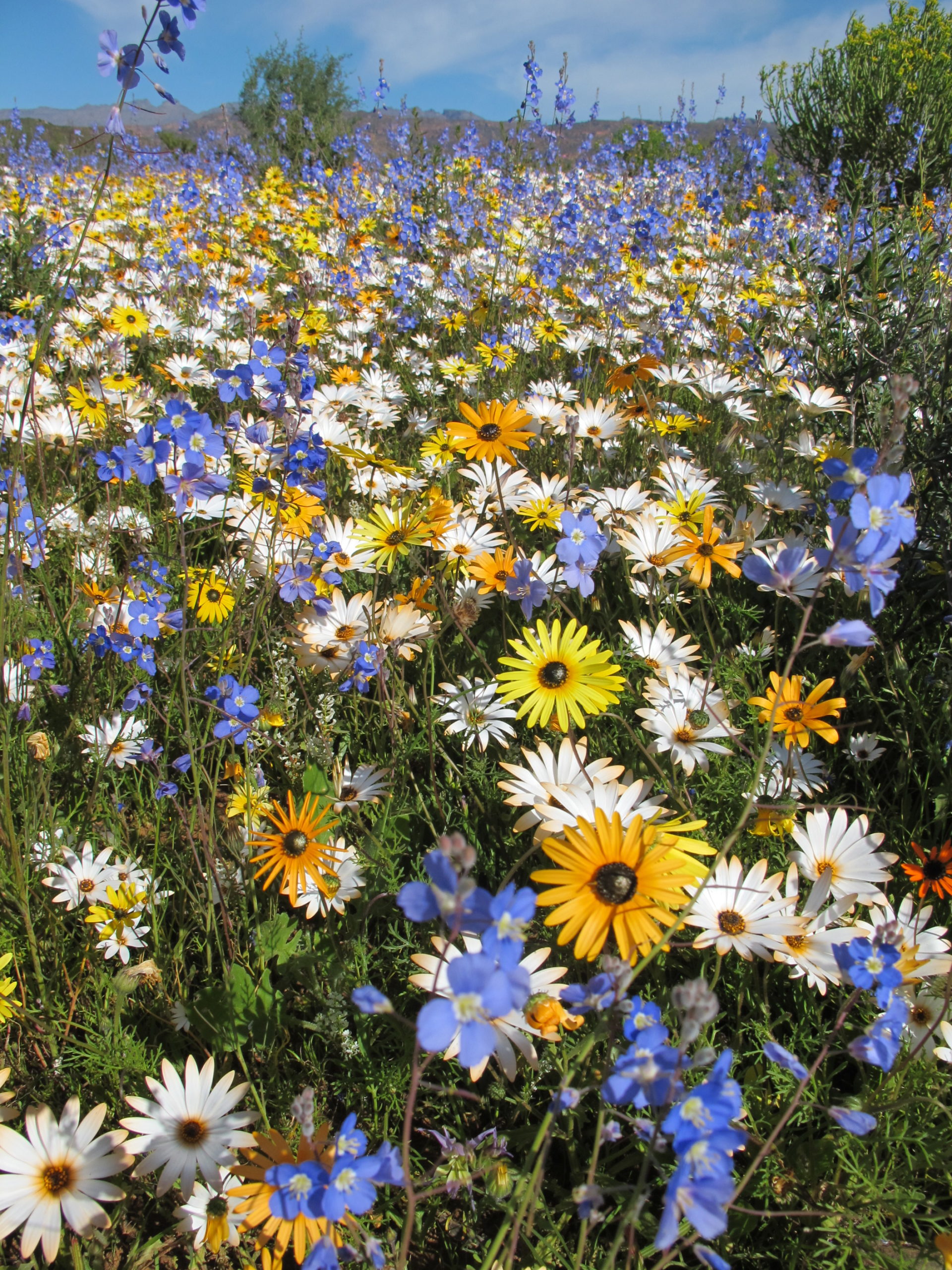
With the introduction of NEMA and its implementation from 2006, and in partnership with rooibos farmers, these guidelines have reduced the problems associated with rooibos expansion. And whilst it is true that some farms have expanded without approval and have in some cases have had an impact, many responsible farmers have taken steps to submit environmental impact assessment applications, and have done so with the approval of the Department of Environmental Affairs. It’s this approach that has contributed toward bringing the the rooibos industry into a sustainable growth trajectory – and the development and growth in prominence of ethical certification guidelines has further provided guidance to the industry.
Over the time period that this important regulatory process played out from the late 1990s up until the implementation of NEMA in 2006, sustainable and ethical certification in the Rooibos industry was non-existent. Organic certification according to the EU Organic Standards, the National Organic Programme (NOP) of the United States Department of Agriculture and JAS (Japanese Agricultural Standard of Organic Agricultural Products) did exist but was not a major force in the certification of Rooibos for export markets. It carried a very small price premium in an industry which was then mostly commodity-driven and was not an attractive option for Rooibos farmers. By 2010 only about 1% of total Rooibos sales was certified Organic.
GlobalGap was required for some fruit exporting farms which also had Rooibos production as a branch, but did not have much of an effect on how Rooibos was produced.
The South African Good Agricultural Practices (SAG.A.P.) code was then and still is the only regulatory control required for all agricultural produce exported from South Africa, including Rooibos. The Perishable Products Export Control Board (PPECB) is responsible for implementing this legislation originating from 2005, and although there is a farming practice aspect to it, in effect it concerns itself mostly with pesticide residues prior to export and has little impact on sustainable farming methods.
Fair Trade is probably the first voluntary certification scheme that made inroads in the rooibos industry around 2006, probably because it carries a mandatory price premium. Although it was originally aimed at connecting small farmers directly with markets overseas it has in fact spilled over into large scale commercial operations as well. This will be discussed in more detail later, but Fair Trade was one of the first niche-market driven voluntary certification schemes impacting on the Rooibos industry, and the Fair Trade Standards have evolved to include a strong environmental sustainability component.
But sustainability as a concept to be taken seriously was at the time just starting to get some attention in the agricultural landscape as the first climate change studies were being done, showing that the West Coast of South Africa, the home of the rooibos industry, will likely get warmer and drier in the future with severe consequences for the environment and agriculture.
It seems fortunate that at the same time many environmental protection initiatives were rolling out across the country, driven by climate concerns, loss of biodiversity and sustainability objectives. One of these, The Greater Cederberg Biodiversity Corridor (GCBC) had a planning domain which coincided to a large degree with the Rooibos production area.
The GCBC in turn was a project of the Cape Action for People and the Environment (CAPE) which is a partnership programme, led by the Department of Environmental Affairs & Tourism with partners from a range of sectors. The objective of CAPE is to secure the conservation of the biodiversity of the Cape Floristic Region (CFR) and, through this, to deliver sustainable economic benefits to the people of the region. A major part of the CAPE strategy is to establish biodiversity corridors in the CFR to maintain the ecological processes required for the persistence of the CFR’s magnificent diversity of plants and animals.
Since its establishment in 2004, and in line with the CAPE objectives outlined above, the GCBC’s goal was to establish natural corridors across the fynbos landscape through stewardship on private land. The majority of rooibos production takes place on farms found within the GCBC, which led to the GCBC working with the rooibos industry to find solutions that would serve to ensure biodiversity was sustained through a custodial balance of natural undisturbed tracts of land alongside farmed sectors. In achieving this, many large-scale rooibos farmers have observed and implemented the NEMA guidelines.
Table of Contents
- Industry Engagement
- The Rooibos Biodiversity Initiative
- Biodiversity Best Practice Guidelines for the sustainable production of Rooibos
- Green Choice Alliance
- Right Rooibos Sustainability Standard
- UTZ
- Rainforest Alliance
- Fair Trade
- Handbook for Implementing Rooibos Sustainability Standards
- Summary and References
Industry Engagement
The South African Rooibos Council (SARC) which was formed as a Section 21 not-for-profit company in 2005 had, apart from its objectives to represent the Rooibos industry, conduct research, promote its interests and do generic marketing, also had a stated goal to formulate and implement strategies for sustainable natural resource management and industry transformation.
Early on, shortly after the establishment of both the GCBC and the SARC, a partnership was established between CapeNature (Formally the Western Cape Nature Conservation Board) who was and still is the implementing agency for the GCBC, and SARC. With regard to managing the agricultural threat to biodiversity, and a 742% growth in Rooibos production between 1993 and 2003, the most effective method of reaching landowners was thought to be through the agricultural industries that they supply.For the GCBC and the biodiversity sector the gains would be in biodiversity conservation, and for the Rooibos industry it would be in preparedness for impending climate changes and market differentiation.
In an effort to get started, Cape Nature and SARC jointly commissioned a sustainability strategy culminating in a report by Tony Hansen titled “Sustainable Rooibos Initiative – A Sustainable Production Strategy for the South African Rooibos Tea Industry (SRI)”.
CapeNature and the SARC came together to devise a strategy to deal with the biodiversity threat and contribute to sustainable production.
The motivation for the rooibos industry to get involved was based on:
- Climate change – the international case for sustainable development is motivated by global warming (devastating effect on food production & life), scarce resources (current consumption not sustainable by the earth) & poverty (unsustainable inequity between rich and poor). A warmer and drier climate is predicted specifically for the western coastal parts of South Africa.
- Results – a global commitment to sustainable development and establishment of the Millennium Development Goals (MDG), ratified at the World Summit of Sustainable Development in Johannesburg in 2003.
- Streamlining action – the business case was proven as sustainable development revolves around risk management. Governments, industry, investors and insurers have started to incorporate sustainable development criteria into their regulations and their respective business models.
- Lessons from the wine industry – sustainable production in the wine industry is one of the core objectives of the Biodiversity and Wine Initiative (BWI). Motivated by the BWI, the Wine & Spirit Board have committed to incorporating sustainable production guidelines as part of the Wine of Origin Certification within three years. This will position the SA wine industry as a world leader in sustainable production, securing access to major markets that implement sustainable production criteria as a buying requirement (proposed by EU).
- Opportunity for the Rooibos industry – benefits of sustainable production include risk management, managing natural resources, decreased input costs, conforming to legislation, strategic positioning with the SA government, generic marketing opportunity, competitive advantage in key markets and expanding markets to increasingly aware consumers.
- Sustainable production in key markets – sustainable production is of growing importance in international markets with the EU moving towards sustainable production as a buying requirement for imported products. Walmart, the world’s biggest supermarket, has committed to sustainable development and using sustainable production as a buying criterion. The BWI have facilitated negotiations between Wines of South Africa and Walmart, potentially opening a huge market.
- The SARC committed to the four dimensions of sustainable production (society, environment, culture and economy) in their profile document. The next step was to design a strategy to implement these four dimensions.
The SRI Vision was: ‘To develop and implement a sustainable production strategy for the Rooibos industry. The strategy will conserve the biodiversity of the GCBC and deliver social and economic benefits to all stakeholders in the GCBC.’
Its objectives were:
- Prevent further loss of habitat in critically endangered and endangered sites of the GCBC;
- Increase the total area set aside as natural habitat in contractual protected areas, with a specific focus on corridors and linkages;
- Promote changes in farming practices that enhance the suitability of Rooibos crops as habitat for biodiversity, and reduce farming practices that have negative impacts on biodiversity;
- Expose economic and social equity opportunities that will increase the profitability of the industry while creating jobs, meeting BEE and land reform targets.
The SRI report (2006) laid out an implementation strategy including the required human resources, project management, funding, development of a set of biodiversity guidelines for rooibos production, stakeholder engagement (producers, processors, marketers, buyers, NGO’s, government departments and institutions), producer engagement through a number of “biodiversity champions” and long term commitment.
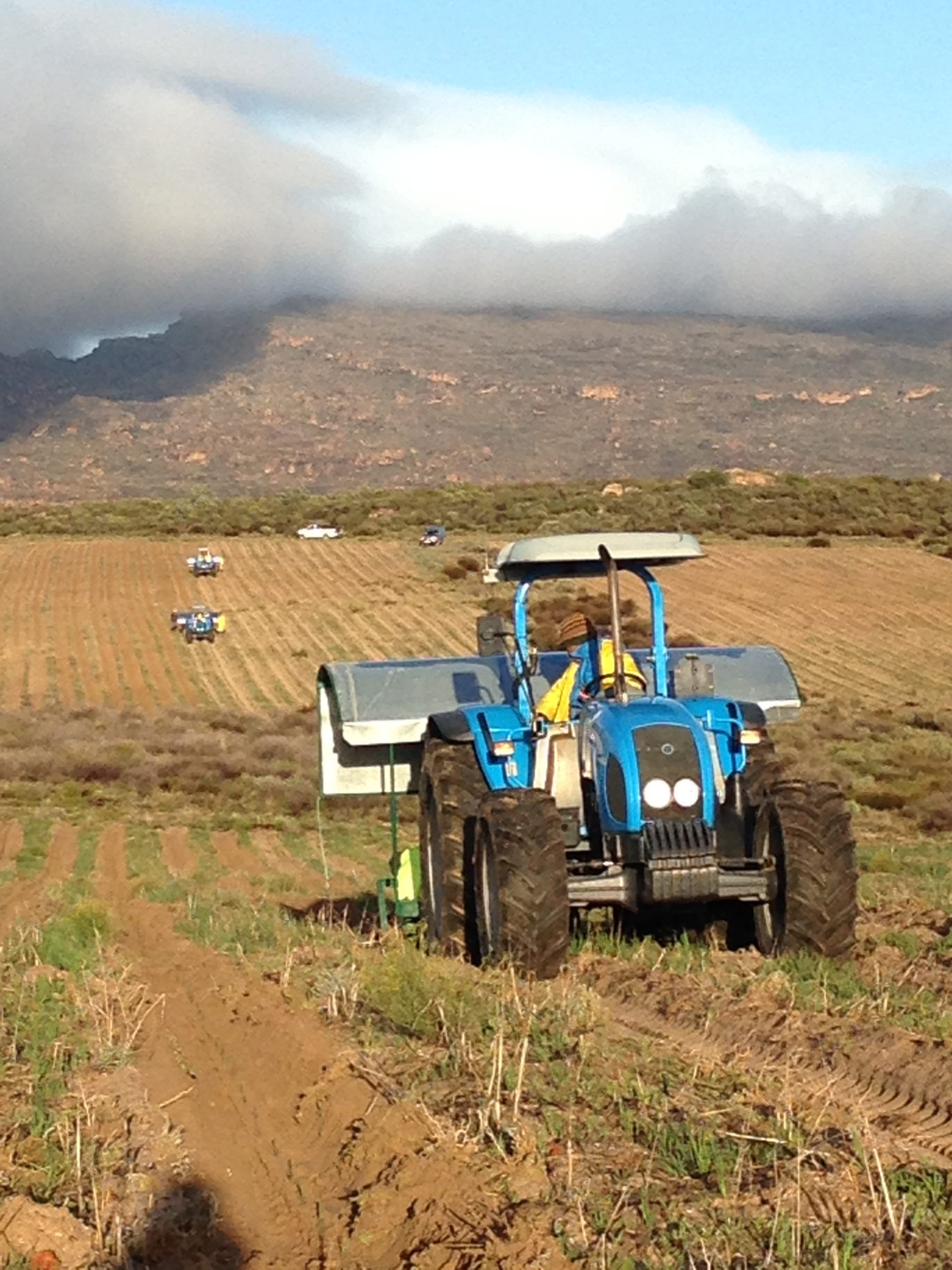
The Rooibos Biodiversity Initiative
The SRI provided context for launching a sustainability initiative in the Rooibos industry, but was still essentially a ‘plan to make a plan’.
In September 2007 a career conservationist, Gerhard Pretorius was appointed to launch the ‘Rooibos Biodiversity Initiative’. The change in title was prompted by the idea that biodiversity should be the initial focal point and that the name of the project should reflect this explicitly. Funding for the first year was provided by the Critical Ecosystems Partnership Fund (CEPF).
The first year was dedicated mostly to the development of a comprehensive set of Biodiversity Best Practice Guidelines, although 20 Rooibos producers were engaged by the end of that year in order to obtain their input into such a set of guidelines.
Various workshops were set up to discuss drafts of the guidelines, invite comments and promote buy-in from producers.
Close liaison with the GCBC steering committee guided the process strongly during the initial phase.
Interest in the project was strong from the start; especially from conservation NGO’s and some government departments like the Western Cape Department of Environmental Affairs and Development Planning (DEA&DP) and Western Cape Department of Agriculture’s LandCare section. The project manager also represented the rooibos industry at forums like the Cape Action for People and the Environment (C.A.P.E.) and later on the Green Choice Alliance (GCA).
Regular interest was shown by the local and international media, including Al Jazeera.
Biodiversity Best Practice Guidelines for the sustainable production of Rooibos
The Guidelines were published by September 2008, building on established theory and practice with regards to sustainable farming and applying it to Rooibos production (Pretorius, 2008).
It attempted to explain biodiversity concerns from regional to international scales, contextualising it with South African legislation and international biodiversity and sustainability commitments, and providing practical steps for a farming operation to implement best practices.
Its purpose was stated as follows:
The purpose of this document is to form the basis for an auditing and certification system to be applied to Rooibos producers and Processors in order to provide credibility for the efforts they make to support the Rooibos Biodiversity Initiative (RBI) and the Bioregional, National and International conservation efforts in the area of production. It is also intended to provide stakeholders with information and act as a reference source on conservation generally, the institutional framework for conservation and agricultural practices, and to provide practical guidelines to achieving good environmental practices.
The RBI is NOT intended to be a theoretical exercise or to be considered something extraneous to Rooibos production processes, an “add on” process designed to please environmental pressure groups or ”greenwash” Rooibos products so that consumers will continue buying it. The guidelines should be fully integrated with other production processes as an integral part thereof.
It addressed specifics such as:
Principles and Environmental Management Plans (EMP)
- Financial planning,
- Farm maps,
- New rooibos plantations,
- Wetland, river and farm dam management,
- Corridors, buffers and habitat fragmentation,
- Roads,
- Alien invasive plants and animal control,
- Veld fire management,
- Rehabilitation,
- Game management and damage-causing animals,
- Waste management,
- Fuel storage,
- Soil management,
- Irrigation,
- Fertilisation,
- integrated pest management, and
- Wild Rooibos.
The project manager continued to engage with selected producers as industry champions on a practical level to promote implementation of best practices and test its applicability.
Each farming operation was assessed for compliance, an environmental management plan developed, specific actions indicated and technical support provided for implementation. 20 producers were engaged by the end of 2008.
It should be pointed out that at this stage the conservation partners intended for any certification scheme to function on the basis that levels of certification should be based on the extent to which producers contributed to the conservation targets of the GCBC.
This was based on the BWI example in which wine producers gained champion status by entering into formal stewardship agreements with CapeNature. It has been successful to some degree but in that industry there are well developed niche markets and the BWI is linked to a well-established marketing arm, the Wines of South Africa (WOSA) so strong incentives exist for producer participation from a marketing perspective.
Rooibos is a much more commodity-driven market and although some producers and small processors/marketers have started pursuing niche markets, it was at that time too small to justify a certification scheme based solely on conservation stewardship agreements.
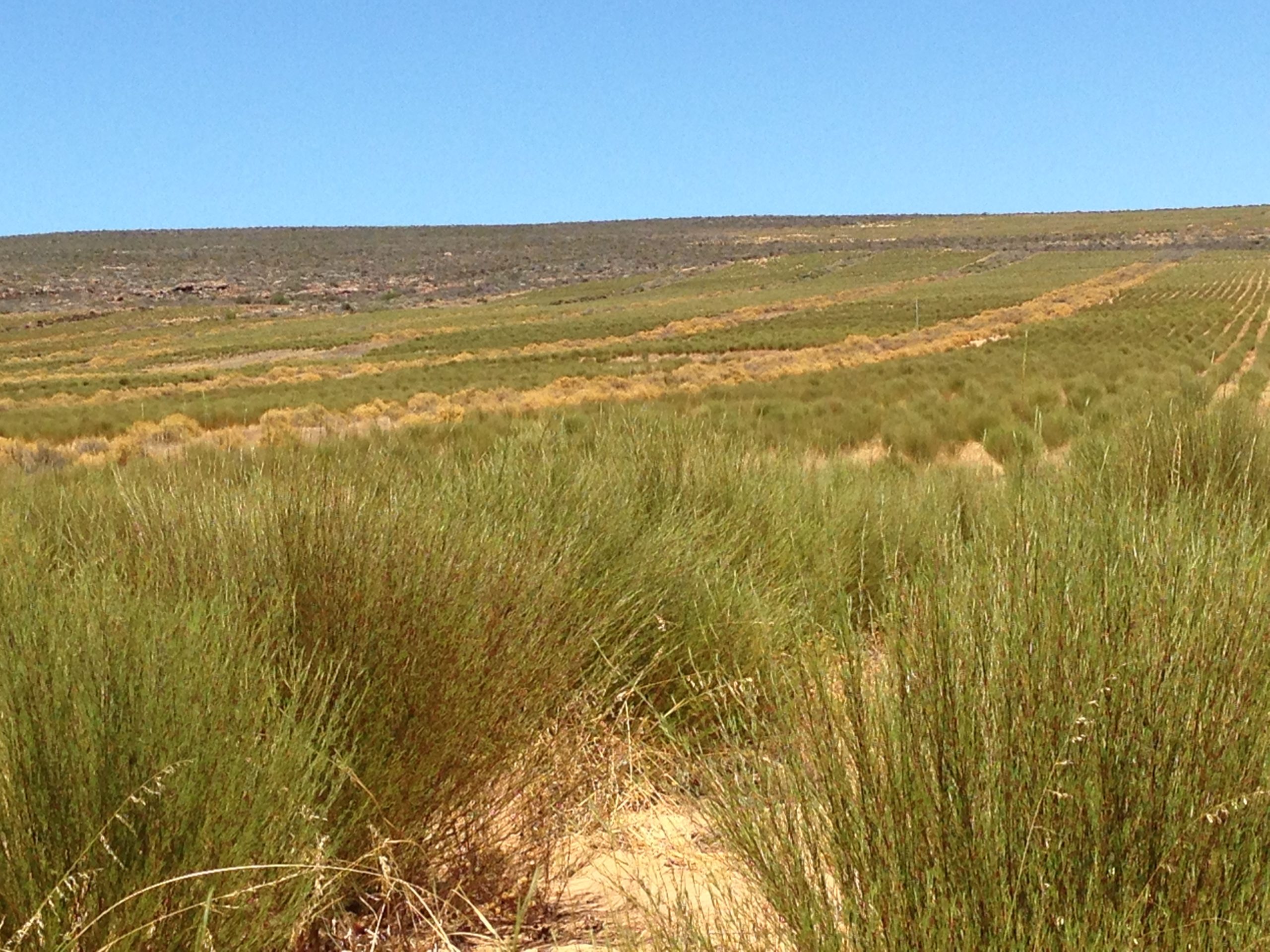
Green Choice Alliance
In 2009 the Green Choice Alliance came into being, managed then by the World Wide Fund for nature (WWF) and Conservation International (CI).
Their purpose was to provide a platform for collaboration between Business and Biodiversity Initiatives (BBI’s) like the Rooibos Biodiversity Initiative (RBI), the Biodiversity and Wine Initiative (BWI), the Southern African Sustainable Seafood Initiative (SASSI) and marketers, government, academic institutions and funders.
They facilitated networking and creation of partnerships by making connections that had not been made before.
It was through this partnership that the Dutch Ministry of Agriculture, Nature and Food Quality committed € 60 000 to research into environmental sustainability and market mechanisms for sustainable Rooibos, as well as a comprehensive socio-economic review of the industry.
The identified focal areas would build on work done to date and further entrench the sustainability of Rooibos production and market linkages.
The project had three main areas of focus. The first intervention was a synthesis of the work done to date into a sustainable Rooibos farming manual.
The second was to develop and field test a monitoring and evaluation (M&E) framework for sustainable Rooibos farming, and the final component, which will also be applicable to the M&E process, was to help create linkages with similar work in international tea and coffee production through a close relationship with Wageningen University.
Social and Economic criteria
In terms of the project mentioned above, the Dutch government contracted a study into the sustainability of Rooibos from South Africa (GreenChoice, Netherlands Minister for Quality, 2009).
The scenarios for sustainability pointed to the need for the RBI to aid in setting the standard for Rooibos certification rather than allowing third party schemes to develop these standards.
This concurred with similar findings by Yuca Waarts at Wageningen University, who recommended that considering the work that has gone into developing the RBI framework it is now necessary to entrench its use amongst farmers (Waarts & Kuit, 2010).
Furthermore, her findings showed that the RBI best practice criteria, in addition to being more comprehensive than actual criteria of the existing tea Codes of Conduct and more regionally specific, are also unique in being owned by the local stakeholders.
While the environmental part of the study, which culminated in the publication of the Biodiversity Best Practice Guidelines for Rooibos Production (Pretorius, 2008), was seen as the first part of a comprehensive sustainability study, it was decided that for the industry to be truly sustainable it needed social and economic criteria to be included with the environmental component already set out by the RBI.
This phase consisted of two parts. The first involved field research to assess the current socio-economic status of the Rooibos industry, done by Sandra Kruger & Associates (SKA). This was concluded in a report which laid out the findings as well as formed the basis for the second part of that phase (Sandra Kruger & Associates, 2009).
The second phase was to develop a set of socio-economic criteria and indicators to be incorporated in the Best Practice Guidelines. The thinking at this time was still very much to set up an independent certification system or partner with existing sustainability certification schemes, as no certification of rooibos was being done except Organic and some Fair Trade. Fair Trade at that stage had few environmental criteria and was not seen as a sustainability certification.
The report looked at the process to be followed according to ISEAL’s Code of Good Practice (ISEAL Alliance, 2010) and the possible steps to be taken from here. At this stage neither UTZ nor Rainforest Alliance had any standards for Rooibos.
The following options for certification were considered:
Option 1: Full additional audit
This option involved making a new standard for Rooibos which would be owned by the industry and would become an additional new standard audited by certification bodies. The standard could be adopted by any certification body adequately trained in the new requirements to be an accredited auditor.
The greatest advantage of this option was that the standard would be industry designed and owned so that ultimately inputs and improvements could be monitored locally. The biggest disadvantage was that those producers already carrying some other certification will be hesitant to adopt a new standard.
Option 2: Additional elements as part of existing standards or codes
This option involves creating a new standard as above, but linking it to existing standards as required. In other words to encourage existing standard setters such as the Fair Trade Labelling Organisation (FLO), GLOBALG.A.P, and UTZ Certified to adopt those elements of the standard that were missing from their existing standards.
This could be in the form of an addendum or even a new product standard which would be the decision of the standard setter.
The advantage would be that producers already certified as Fair Trade or GLOBALG.A.P would not have to submit to an entirely new audit, but would only need to comply with the annex/addendum for Rooibos.
The disadvantage was that the annex might be seen as an optional extra that does not have to be complied with as for the main product standard for tea.
The difficulty would also be to convince existing standard setters to adopt the Rooibos standard and to use it in conjunction with their own.
Option 3: Full standard adopted by an existing standard setter
The third option was to encourage existing standard setters to adopt the entire Rooibos standard into their audit, but to only audit those criteria that are not already duplicated by their own.
For example a producer that is already Fair Trade certified would only need to be certified against the dimensions not covered by the Fair Trade standard for tea. This would include some elements of the environmental standard covering biodiversity, the dimension on Rooibos quality and the dimension on food safety.
If however that same producer was also HACCP certified then they would not have to be audited on the food safety dimension and so it would go through all existing standards that producer has.
This option tied in extremely well with the intention of ISEAL which is “not the development of an ever increasing number of standards initiatives, but to improve consistency between standards, enhancing their effectiveness” (ISEAL Alliance, 2010).
The negative of this option was that it would require some logistical organisation in advance to couple the standard with existing standards and to make a clear guidance document as to which part of the standard should be audited in the presence of all other standards which exist.
It would also require external monitoring and coordination to ensure that it is working in practice and that certification bodies were auditing correctly according to the additional criteria.
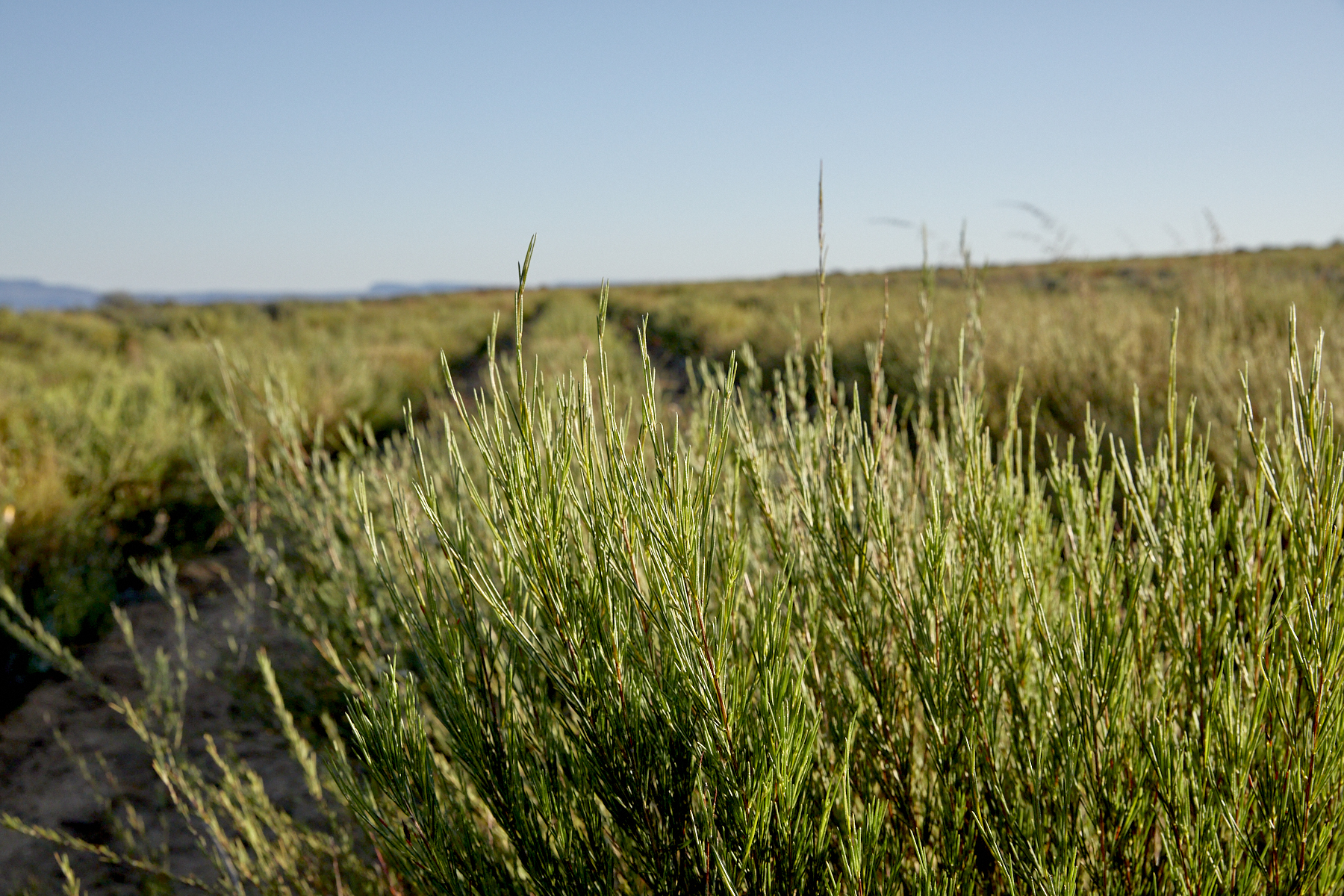
Right Rooibos Sustainability Standard
The first component of the work of GCA, therefore, was to have all the dimensions and standards for sustainable rooibos production compiled into a single publication with the purpose of promoting these best practice guidelines amongst a wide range of stakeholders.
This publication would present interested third party certifying agencies with the full spectrum of Rooibos best practices and impress upon them the value of the investment.
While the project continued as the Rooibos Biodiversity Initiative, in order to reflect the change to a full spectrum of sustainability criteria it was re-branded as the Right Rooibos initiative.
The original biodiversity best practices and the inclusion of socio economic indicators generated by the Sandra Kruger & Associates (2009) culminated in the Right Rooibos Sustainability Standard.
The final product published on 30 June 2011 also leaned on the comparison of a number of international sustainability standards and the Greenchoice Reference for Well-Managed Farms (Scotcher 2009).
The Right Rooibos campaign had lofty ideals, as accurately described by Keahy and Murray (2017); “Recognising that industries cannot change practices or behaviours without retaining some control over the value chain, the campaign sought to strengthen the position of the Rooibos industry in markets by instituting an integrated management system that could adapt to growing demand for sustainably produced goods. With a social goal of extending market prospects for marginal groups, it sought to reduce certification costs by promoting an industry label that would be capable of capturing multiple certifications in a single auditing stream.
For this to work, the label had to exceed the requirements of international standards such as Fair Trade. To offset the difficulties involved in meeting a stringent industry label, the campaign also worked on instituting a Rooibos extension system that would deliver training and support to producers. It was hoped that this extension system would provide a unified framework to:
- ensure environmentally sound agricultural practices;
- support less-advantaged farmers; and
- develop commercially sustainable practices.”
However, despite the potential of an industry label, Right Rooibos suffered from a lack of resources and failed to secure broad-based alignment.
As Keahy and Murray (2017) report: “Some firms were wary of any Council effort to streamline the industry as they felt that this could lead to a re-centralisation of power. During a Right Rooibos event, estate farmers stated that while they appreciated the possibility of single audits and reduced costs, they also noted the challenges involved in meeting existing standards and expressed concerns regarding the stringency of the proposed label”.
In 2011, the campaign halted its efforts to institute an industry label after commercial certification bodies entered the scene.
However, in addition to retaining its focus on extension services, Right Rooibos continued to promote alignment with various sustainability certifications.
Noting that commercial sustainability is dependent upon social and environmental responsibility, the project manager stated that certifications are merely a means to an end as “the ultimate goal is for farmers to implement sustainability standards not because a label requires it, but because this makes good business sense.”
He also continued to provide an extension service and implementation advice to producers on behalf of SARC.
Two further related projects continued, again funded by the Dutch Government and implemented by GreenChoice, namely (1) the Handbook for Implementing Rooibos Sustainability Standards and (2) The Simpatica Monitoring and Evaluation System.
Third Party Certification
UTZ
In 2010, UTZ Certified identified the need to develop a Standard for the certification of Rooibos tea adapted for the unique nature of the product and the local context. After some industry consultation it was decided to develop a stand-alone UTZ Code of Conduct for Rooibos, given that the industry had at that time already developed its Right Rooibos Sustainability Standard and was well placed to guide the process.
Sandra Kruger and Associates was responsible for the management and implementation of this process from inception until the final delivery of an auditable standard.
The first draft of the standard was developed through the facilitation of a series of UTZ stakeholder workshops and a national consultation process, in which the Rooibos Biodiversity Initiative and Right Rooibos Sustainability Standards played a significant role.
The draft UTZ Code of Conduct for Rooibos in South Africa was then piloted in the Rooibos value chain with commercial farmers, small farmers and processors and information gathered during the pilot was used to finalize the Code in collaboration with UTZ on 23 March 2011.
During the following year five commercial farming operations obtained UTZ certification.
There are currently 8 UTZ certified Rooibos farms and two certified processors (and amongst these is Klipopmekaar Rooibos Farm). While there is no set premium on the price of UTZ certified rooibos, the code of conduct requires that a premium must be paid, negotiated between seller and buyer.
During 2017 UTZ Certified became part of the Rainforest Alliance but continues doing its own certification.
Rainforest Alliance
By January 2011 the Rainforest Alliance and the Sustainable Agriculture Network (of which it is part) also entered the Rooibos arena on the back of market demand for certified sustainable Rooibos tea.
However they did not initially consult with the Rooibos industry at all, despite the fact that the industry had developed a full sustainability standard for Rooibos production on a par with international standards including the Sustainable Agriculture Network (SAN) standard.
It was clear to the Rooibos Biodiversity Manager that there were numerous aspects of the SAN standard to which the Rainforest Alliance certifies farms, which could not easily be applied to the Rooibos and South African environmental context.
It was written for a rainforest context including the regulatory environment in the countries in which rainforests occur, and did not take cognisance of the Cape Floral Kingdom/Fynbos and South African regulatory environment at all.
It was only after an invitation on 31 May 2011 by the RBI manager and SARC to Ms. Winfred Mwaniki, Consulting Regional Projects Manager East Africa of the Rainforest Alliance, that the process of drafting an “interpretation” guideline commenced.
The consultation process started in June 2011 with a workshop attended by roleplayers from the Rooibos industry including producers, marketers, processors and branders, as well as conservation NGO’s, academic institutions and government.
This Rooibos Interpretation Guideline was then developed to specifically allow certificate holders, producers and certifiers to interpret the SAN Standard for Rooibos certification.
There are currently 9 Rainforest Alliance certified Rooibos farms in South Africa – and our farm in the Northern Cederberg is amongst those proudly carrying this cerification. A premium of around 43 cents (South African) is mandatory for the purchasing of certified Rooibos.
Mutual Recognition
During 2017 UTZ Certified became part of the Rainforest Alliance while continuing its own certification.
In terms of a mutual recognition agreement between them from 1 July 2020, buyers will be able to source Rainforest Alliance Certified™ and/or UTZ certified vanilla and herbal infusion ingredients, including Rooibos, and then use either the Rainforest Alliance Certified seal or UTZ label on pack (in accordance with the corresponding labeling policy and guidelines).
This is in addition to the Chain of Custody mutual recognition that has been in place since December 2018, which allows companies to purchase both Rainforest Alliance and UTZ certified ingredients while only having one Chain of Custody certificate in place for either one of the current programs.
Fair Trade
Fair Trade’s contribution and growth in the Rooibos sector engaged key issues of black empowerment, land reform, and sustainable development in post-Apartheid South Africa.
Fair Trade networks provide small-scale black Rooibos producers with critical markets mainly in Europe.
An upgrade by the Wupperthal and Heiveld cooperatives into processing and packaging and their jointly owned Fairpackers facility for exporting shelf-ready Rooibos tea unfortunately failed after both the company and the Wupperthal Cooperative failed to retain their Fair Trade certification in 2009.
Raynolds and Ngcwangub (2010) found that there are two different market forces at work in Fair Trade certification for Rooibos however; (1) mission-driven buyers engaging small-scale Rooibos cooperatives in multifaceted partnership networks, and (2) market-driven buyers pursuing conventional sourcing strategies favoring purchases from large plantations and exporters.
They conclude that tensions between a radical and commercial orientation toward Fair Trade in Rooibos tea networks in many ways mirror those in the broader movement.
Jari et al (2013) found that Fair Trade certification of both small-scale farmer cooperatives and commercial farms in the study had a positive influence on sustainable development.
In small scale farmer cooperatives, Fair Trade benefits are directed mainly to producers involved in Fair Trade, such as co-operative members.
In commercial farms, the benefits are directed to local communities, including Fair Trade producers. Fair Trade certification of commercial farms potentially create competition for small-scale farmers in the market.
Even though that is the case, certification of commercial farms is justifiable, considering that commercial farmers themselves will not lose most if excluded from Fair Trade. Rather, the majority of low-income farm workers, who rely on Fair Trade for the development of community services, stand to gain most from Fair Trade.
Jari et al (2013) therefore conclude that Fair Trade should certify both small-scale farmer cooperatives and commercial farms in South Africa. However, the Fair Trade organisation should consider limiting certification to small-scale farmer cooperatives for commodities whose Fair Trade demand can be met by small-scale farmers.
While Fair Trade certification was originally intended to create direct market links between small farmers (and their co-operatives) and markets, it has grown in scope to include environmental sustainability criteria and now include all the pillars of sustainability.
This would be a good thing except that certification has become very onerous for the intended beneficiaries and more of a self-serving branding exercise for some certifiers, which has more recently led to a growth in the number of Fair Trade certification schemes.
There are currently 5 certified commercial operations and 2 small farmer co-operatives.
The mandatory price premium for Fair Trade certified Rooibos tea is R5/kg.
Handbook for Implementing Rooibos Sustainability Standards
While international certification schemes have by this time entered the rooibos market, there was still the need for help with regards to certification on farms which have not had a lot of experience in this regard.
Building on the Biodiversity Best Practice guidelines and the Environmental Management Plans already integrated to a degree on some farms the Dutch Government further funded the publication of a “how to” book titled the “Handbook for Implementing Rooibos Sustainability Standards” (Pretorius et al , 2011).
Under the heading “How to use this book” it says the following:
“This book aims to make it easier to farm Rooibos according to tried and tested better management practices. It provides practical advice on how to implement management systems and actions on the farm that comply with recognised sustainability standards.
Although using this handbook will help to prepare for auditing and certification, it has a far broader application in pursuing better farming practices. It is designed to be used as a reference work where you can find answers to the full spectrum of social and environmental questions.
Use the table of contents at the beginning of the book to guide you to specific information in the chapters on standards, integrated management systems, labour and economic empowerment issues, and environmental management techniques. We have included detailed instructions on many aspects of compliance and, where appropriate, provide direct links to a plethora of guidelines, documents and templates that may smooth the road to certification”.
About 200 copies of this book have been distributed freely among rooibos producers, and the odd request for a copy still arrives now and then.
Monitoring and Evaluation
One more component arose out of a study conducted by GreenChoice into the negative and positive impacts of the RBI, which found that insufficient baseline data had been gathered at the outset of the project. This lack of data made it difficult to build the business case necessary to promote the tenants of sustainable production to the farmers. It could also weaken the case for the Rooibos Best Practice guidelines as the ideal standard for production.
GreenChoice then, as part of the project funded by the Dutch government, started to develop and field test tools to measure agricultural impacts in order to monitor the performance of the Rooibos Best Practice project and, potentially, future certification programmes.
Michiel Kuit of Kuit Consultancy (also affiliated to the Wageningen University) developed an online monitoring tool named Simpatica to be spearheaded by 20 rooibos producers.
The platform allowed for producers to record all activities on their farms, linked to maps and data of the farm. While many similar tools have since been developed and are available as cellphone apps today, at the time Simpatica was quite advanced.
It would provide very detailed records of activities including financial records, production and even ecosystem services, allow for improved planning and provide a solid basis for data and records required by certification.
However, in spite of it being free, training workshops and continuous technical assistance it turned out to be too complicated to operate.
Internet connections were far less efficient than today, especially in the rural landscape, and connectivity issues meant that producers would get frustrated and give up.
Also it would require the producer to collect data into a farmer’s record book first, and then enter the data from a personal computer at intervals. Cellphones were not advanced enough to do this with ease at the time.
While the participating farmers appreciated the value it could add to their business, the entire system just proved to be not user friendly enough and was abandoned after a year of trying to make it work.
Industry change and the end of Right Rooibos
From the start of the Rooibos Biodiversity Initiative to the end of the Right Rooibos campaign the SARC had a producer portfolio, from 2005 to 2013.
Due to internal politics, a move for the SARC to become a statutory board and the question of a small producer levy there was a proposal that rooibos producers should decide whether they wanted to remain represented by the SARC or not.
A vote was organised in which Rooibos producers indicated that they did not want to be part of SARC as a producer group.
Since Right Rooibos was embedded in the producer portfolio of SARC, funding for the project ended in March 2014 and operations ceased.
Summary and References
Summary
The period from 2006 to 2014 can be described as the time when international and local sustainability and environmental concerns found the Rooibos industry out and the Rooibos industry found sustainability.
For a crucial period of time the industry was able to form partnerships with environmental programmes, institutions, governments (South African and Dutch), NGO’s, academic institutions locally and abroad, market players and sustainability certifiers that paved the way for sustainability certification to be entrenched.
While the industry could not continue with a programme of large scale industry reform as hoped for, at least it was able to help facilitate a new awareness of the issue of sustainable production, and see a number of operations achieving sustainability and ethical certification.
19 Farming operations are certified to Fair Trade, Rainforest Alliance and UTZ standards, many of them large concerns controlling large areas of land and employing many people, and it has an impact on the biodiversity and people of the area.
Perhaps more market demand for ethical rooibos will see this wave grow and continue to bigger heights.
References
Jari, B., Snowball, J. D. and Fraser, G.C.G. 2013. Is Fairtrade in commercial farms justifiable? Its impact on commercial and small-scale producers in South Africa, Agrekon: Agricultural Economics Research, Policy and Practice in Southern Africa, 52:4, 66-88,
Keahy, J. and Murray, D. 2017. The Promise and Perils of Market-based Sustainability; Capacity Development in South African Rooibos Tea. Sociology of Development 3(2):143-162
Pretorius, G.C.P. 2008. Biodiversity Best Practice Guidelines for the sustainable production of Rooibos. Greater Cederberg Biodiversity Corridor and South African Rooibos Council.
Pretorius, G.C.P, Harley, V. and Ryser, L. 2011. Handbook for Implementing Rooibos Sustainability Standards. Agricultural Department of the Embassy of the Kingdom of the Netherlands, South Africa.
Raynolds, L.T and Ngcwangub, S.U. 2010. Fair Trade Rooibos tea: Connecting South African producers and American consumer markets. Department of Anthropology and Sociology, University of the Western Cape, Private Bag x17, Bellville 7535, South Africa.
Sandra Kruger & Associates. 2009. Social and Economic Criteria and Indicators for the South African Rooibos Industry. Ministry of Agriculture, Nature and Food Quality, Kingdom of the Netherlands & Green Choice Alliance.
Scotcher, J.S.B. 2010. The Green Choice Living Farms Reference. Green Choice Alliance.
Waarts, Y., M. Kuit. 2010. Intensification and Sustainability in South African Rooibos: exploring the conditions for marketled sustainable development in a biodiversity hot spot. Wageningen University.
Waarts, Y., M. Kuit. 2010. ‘Does international sustainability certification support regional biodiversity conservation objectives? The case of Rooibos production and Fynbos conservation in South Africa’. In: Rethinking applied policy research for sustainable agricultural value chain development. Report 2010-004, LEI Wageningen UR, The Hague, The Netherlands.
